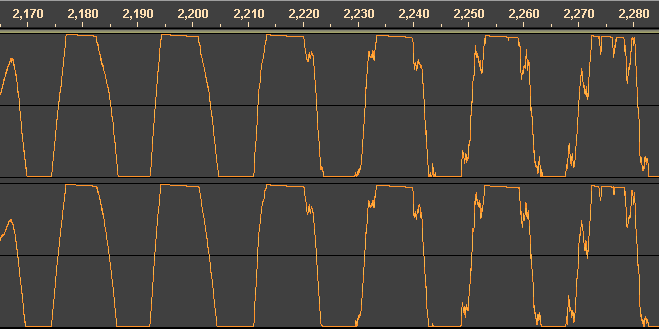More than hype: how open technology, affordable precision, and creative freedom are redefining what it means to be an audio engineer.
Not Your Dad’s Golden Age
The phrase “golden age” gets thrown around in tech circles like a cliché. In music production, people say it wistfully — often referring to the 1960s–70s, when studios were cathedrals, tape machines ruled, and analog gear was king.
But here’s the truth:
Right now — not decades ago — we are living through the most powerful, democratic, and innovative era in the history of audio engineering.
And no, this isn’t romanticism. It’s measurable. It’s structural. It’s scientific. Let’s unpack why this moment is real, and why it matters.
1. 🎧 The Democratization of High-Fidelity Sound
Then:
- Professional audio required million-dollar studios.
- Precision gear was limited to top-tier facilities.
- Creative tools were locked behind hardware and gatekeepers.
Now:
- Studio-grade interfaces are available under $200.
- Headphone and monitor tech is accurate enough for mastering.
- Open-source DSP and freely available DAWs put advanced tools in anyone’s hands.
A teenager with a laptop and headphones can now produce, mix, and master at a fidelity once reserved for Abbey Road.
It’s not just about access — it’s affordable precision. Consumer gear has crossed the noise, headroom, and latency thresholds needed for critical listening and production.
2. 🧩 We Understand Audio Physics Better Than Ever
We are no longer “guessing” how things sound. Thanks to advanced signal theory, mathematical modeling, and DSP science, we now simulate, measure, and manipulate audio with surgical control.
- Emulation plugins replicate gear circuit by circuit, not just by sound.
- Real-time spectral analysis, phase correlation, and psychoacoustic metering are standard tools.
- Entire production workflows are backed by data, not myth.
Today’s engineers don’t just hear problems — they see them, model them, and solve them with physics.
This shift — from art alone to art + science — is what turns a moment into a golden age.
3. 🔬 The Rise of DIY and Open-Source Audio Engineering
Want to build your own compressor plugin? Or a DAC? Or a convolution reverb engine using your church’s stairwell? You can — and people do.
- JUCE, Pure Data, and Faust let anyone write world-class audio software.
- DIYers build custom microphones, analog synths, even tube amps.
- Open-source projects (like Surge, Airwindows, VCV Rack) rival — and often exceed — commercial products.
Knowledge is no longer locked in trade schools or black boxes. It’s on GitHub.
This is not a renaissance — it’s a revolution.
4. ⏱️ Latency, Quality, and Real-Time Precision — Solved
Some say “analog still sounds better.” That’s fine — but digital has caught up, and in many areas, surpassed it.
- Latency below 2ms is now routine with Thunderbolt and ASIO.
- 32-bit float processing gives near-unlimited headroom and zero noise floor.
- Dynamic range and THD+N of DACs have reached theoretical limits of hearing.
Let that sink in: we have reached the bounds of human perception, and are now engineering beyond it.
We no longer chase perfect sound. We engineer with it.
5. 🎛️ Infinite Analog in Your Pocket
That $30 plugin? It might be modeling a $10,000 compressor using nonlinear harmonic transfer functions, component-wise SPICE modeling, and dynamic impulse responses.
You’re not “cheating.” You’re bending time — calling up a hundred years of gear history, instantly, non-destructively, with recall and automation.
What used to require racks, maintenance, heat, and cables… now fits in your DAW and can be automated by an LFO.
This isn’t emulation. It’s post-analog creativity.
6. 🌍 Collaboration, Education, and the Global Studio
- Online platforms (Splice, SoundBetter, Audiomovers) let you collaborate live across continents.
- Free education from top engineers is everywhere: YouTube, Discord, Coursera, forums.
- AI-powered tools now assist with EQ, mastering, even stem separation.
Knowledge is global. Talent is local. Tools are universal.
The walls of the traditional studio are gone. The next mix you hear could come from a bedroom in Lagos, a café in Berlin, or a cabin in Brazil.
7. 📈 Data-Driven Creativity: The New Frontier
AI and machine learning are changing not just how we work, but how we think about sound:
- Mastering algorithms (like LANDR or Ozone) use data from millions of tracks to make decisions.
- Dynamic EQs and spectral tools respond in ways analog never could.
- Generative music tools are blurring the lines between composition and engineering.
We are no longer just mixing audio. We are designing intelligent audio systems.
It’s not about replacing creativity — it’s about amplifying it.
🎯 Conclusion: This Is Not a Joke
When people say “the golden age is behind us,” what they usually mean is:
“I miss the feeling of mystery in the gear.”
But mystery isn’t magic — it’s ignorance. And today, we’ve replaced mystery with understanding, precision, and limitless possibility.
We live in an age where:
- The best tools are accessible to everyone.
- The science of sound is open and explorable.
- The barrier between imagination and realization is nearly gone.
That’s not a trend.
That’s not nostalgia.
That’s not marketing.
That’s a Golden Age.
And it’s just beginning.
